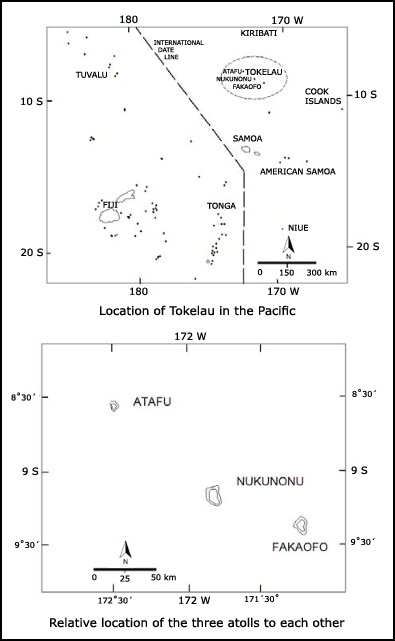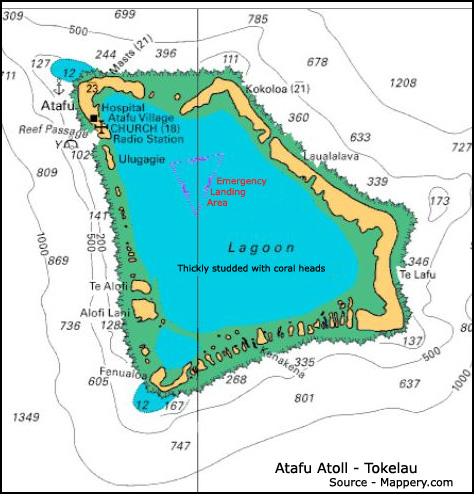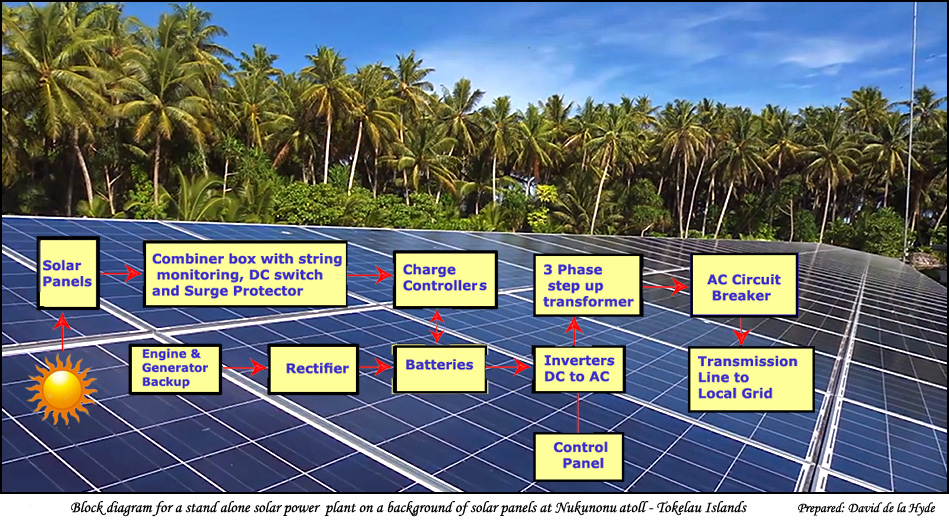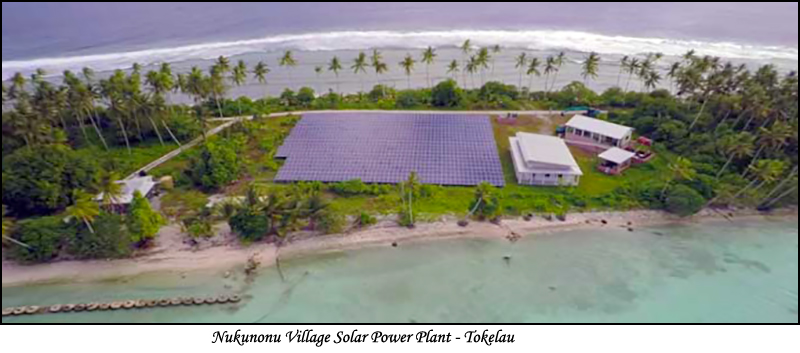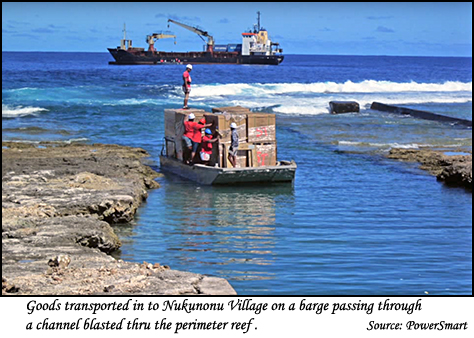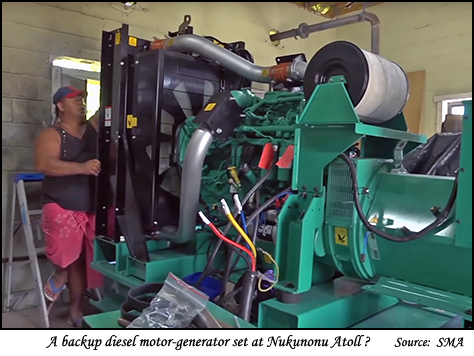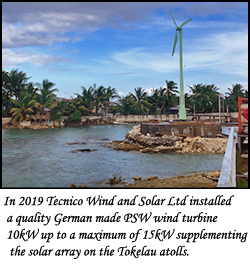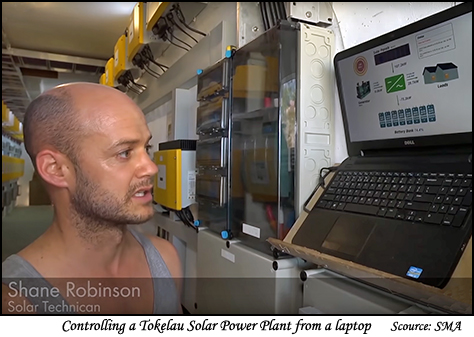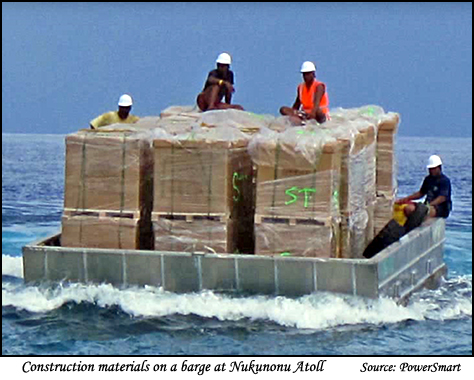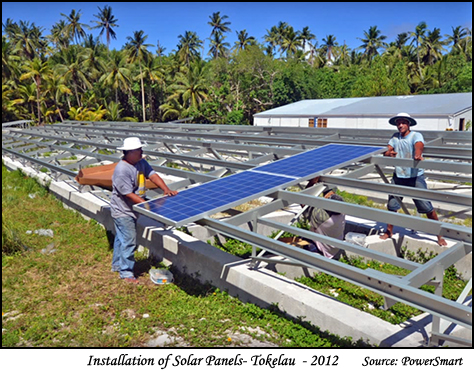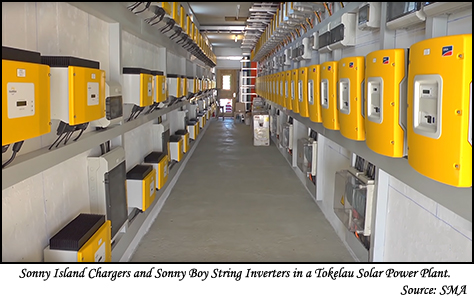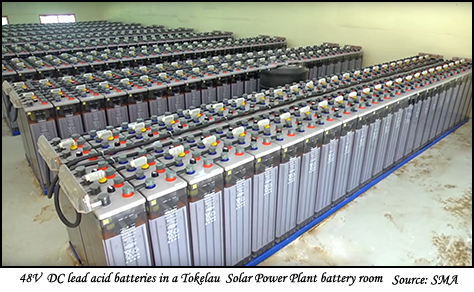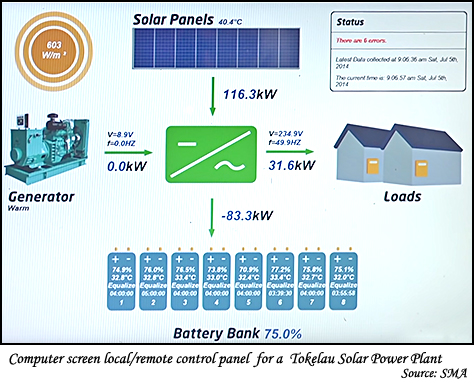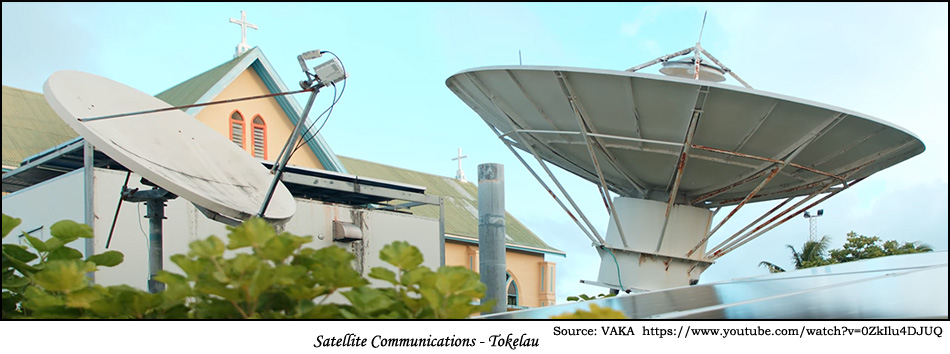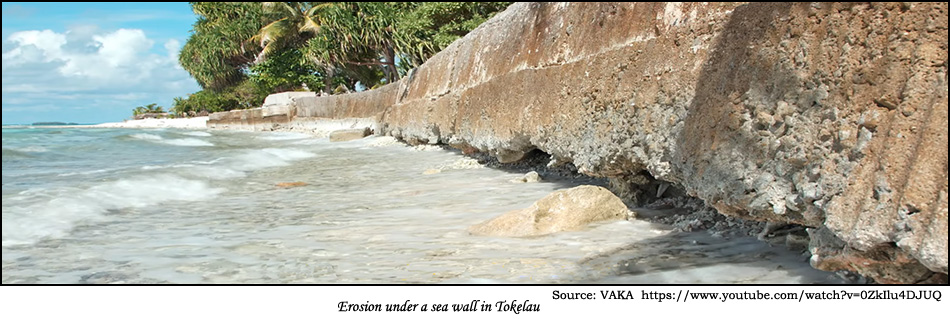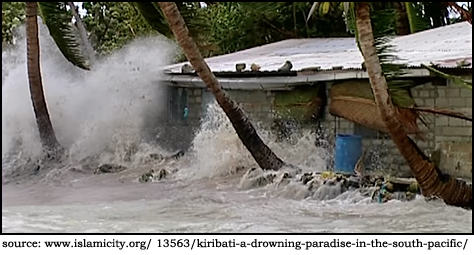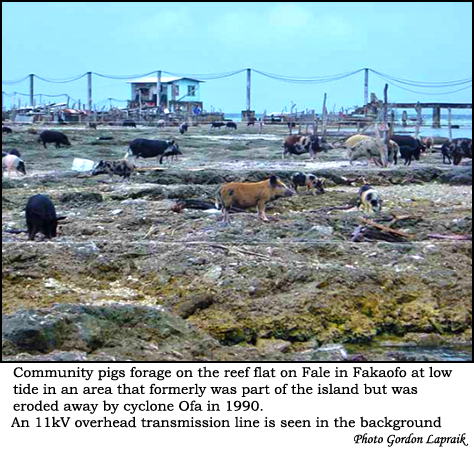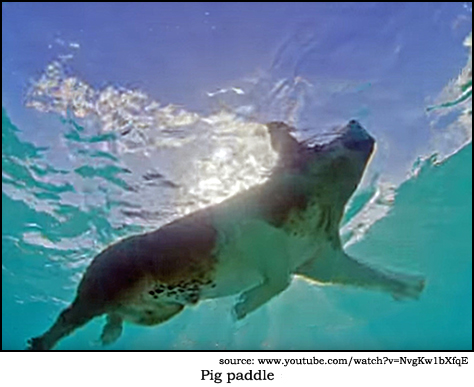TOKELAU - FIRST NATION WITH 100% SOLAR POWER

I was reading "Clean Disruption of Energy and Transportation" by Tony Seba when I came across a reference to Tauranga. My interest was aroused because I lived in Tauranga for about 14 years (1972 - 1986).
Tony Seba: "PowerSmart Solar, a company based in Tauranga, New Zealand, built Tokelau’s solar installations. Dean Parchomchuck, a co-founder of the company, led the installation team on the islands. I met him over coffee at the University of Auckland Business School, where he told me that his company’s solar installation took a grand total of 22 weeks."
"The first atoll took ten weeks and the second and third atolls took about six weeks each. Here you can see the solar installation learning curve at work. Had there been a fourth atoll, the installation time there would have been even shorter. The three solar power installations consist of 1.5 MW of solar photovoltaic panels and on-site battery banks that store the energy for night time and rainy day usage."
PowerSmart started work on the project in June 2012 in collaboration with energy consultancy IT Power Australia.
Three hybrid power systems were installed to supply 90+% renewable electricity to the three atolls: Nukunonu, Fakaofo and Atafu with a total population of 1,500 people.
These systems consisted of between 240 – 400kW of PV and 1.4 – 1.9 MWh of lead acid battery banks.
The solar power systems include a total of 4,032 PV panels, 392 inverters and 1,344 batteries.
A variant on the above generic block diagram, as found in Tokelau, is that some PV arrays are not connected to the battery bank via a solar charge controller. Instead, the solar PV 48V DC output is inverted and passed directly into the nominal 230V 50 Hz AC network and transformed to 11kV for transmission to the villages.
On Oct 30, 2012 PowerSmart announced it had completed the the NZD-7.5-million (USD 6.2m/EUR 4.8m) project, financed by New Zealand.
From Tony Seba:
"The World’s First Solar Nation of Tokelau became the first nation in the world to go 100-percent solar. Tokelau is a decidedly small nation with a population of 1,411 people spread over 12 square km on three atolls. Tokelau switched to solar because the nation had a problem that is typical of diesel-powered economies."
"Tokelau used to spend about NZ$ 1 million (US$ 0.83 million) on diesel fuel per year. This doesn’t sound like much until you consider the island nation’s total GDP, US$1.5 million. Fifty-five percent of the island’s income was spent for diesel fuel to power its economy. This all changed when the island went solar. Much of the conversation about electricity focuses on the levelized cost of energy. Few people take into account the quality of life that dependence on the fossil fuel drug engenders. Diesel is so expensive, diesel generators in Tokelau were shut off at night to save money".
"Medicines that needed to stay cool round-the-clock would go bad; patients who needed treatment at night would go untreated. Diesel was delivered by boat once a month. Sometimes the islands ran out of diesel altogether and would have to wait for the next shipment in the dark. Diesel was at best an intermittent source of energy. Now that they are off diesel, Tokelauans will nearly double their income, raise their quality of life, and have a 24/7 supply of energy."
Ref: Seba, Tony. "Clean Disruption of Energy and Transportation: How Silicon Valley Will Make Oil, Nuclear, Natural Gas, Coal, Electric Utilities and Conventional Cars Obsolete by 2030"
Kindle Edition, 291 pages Published June 16th 2014
